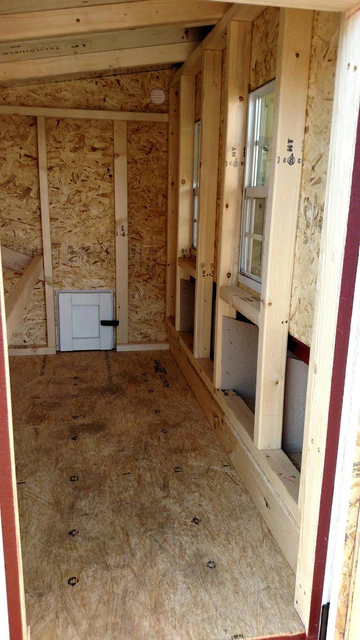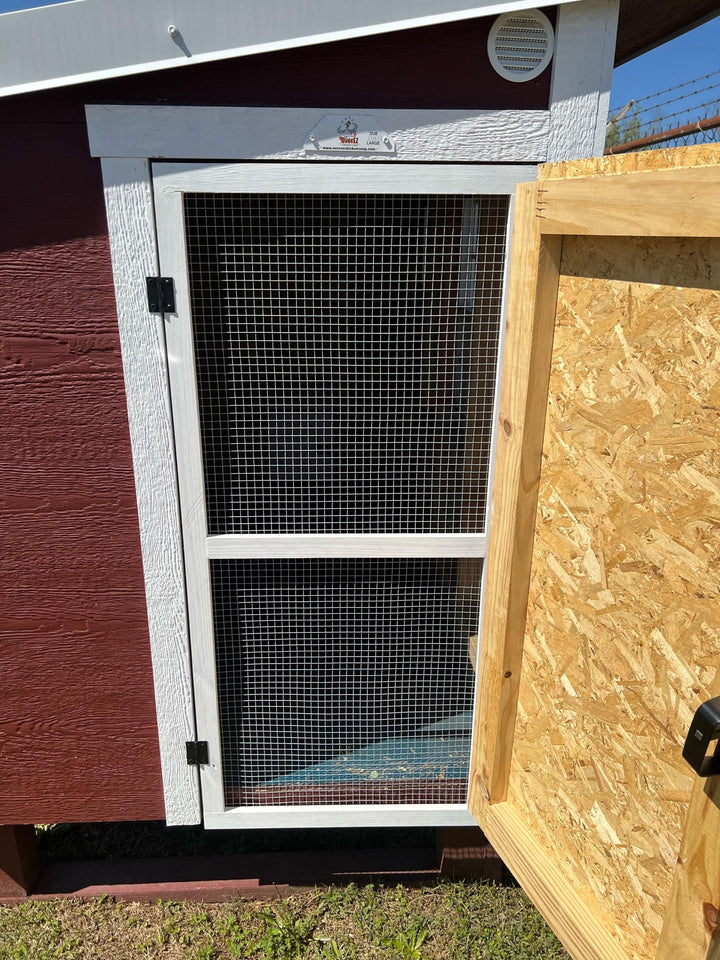Your Cart is Empty
Call, Text or Chat Mon-Friday 10AM-5PM CST : 1-844-WILDOAK
Menu
-
- Deals & Promos
- Homesteading
- Living Off The Grid
- Off Grid Toilet
- Composting Toilets
- Incinerating Toilet
- Chicken Coops
- Greenhouses
- DIY Shed Kits
- Barndominium Kit
- Garage Kits
- Poultry Processing
- Dog Kennels
- BeeKeeping
- EMP & Signal Protection
- Emergency Food Kits
- Freeze Dryers
- Solar Generators, Panels and Batteries
- Solar Fridge & Freezers
- Propane Wall Heater
- Water Filtration
- Coolers and Cooking
- Gazebos
- Portable Sauna
- Camping Cot
- Hunting Blind
- Canvas Tents
- Prepping
- Overlanding Gear
- Composting Toilets
- Solar Generators
- Brands
- Chicken Coop Brands
- Composting Toilet Brands
- Solar Brands
- Food Storage Brands
- Freeze Dryer Brands
- Water Filtration Brands
- Incinerating Toilet
- Dry Flush Toilet Brands
- Waterless Toilet Brands
- Heater Brands
- EMP Shield Brands
- Tent Brands
- Cot Brands
- Cooler Brands
- Stove & Grill Brands
- Dog Kennels
- Greenhouse & Gazebo Brands
- Portable Saunas
- DIY Shed Kits
- About Us
- Resource Center
- The Ultimate Prepper & Emergency Survival Blog - Includes Free eBook
- Beginners Guide to Living off The Grid - Includes Free eBook
- Building Your Own Emergency Food Supply
- Best Survival Food to Be Prepared for Anything
- Berkey Lab Tests & Certifications
- Federal Solar Tax Credit - What You Need to Know
- BLOG
-
- 1-844-945-3625
- Login

Call, Text or Chat Mon-Friday 10AM-5PM CST : 1-844-WILDOAK
Are OverEZ Chicken Coops Insulated? How to Keep Your Chickens Warm in the Winter
by Patricia Turla 5 min read
Winter is coming! While you might be ready to don your fluffy jackets and sip on hot cocoa, have you thought about your backyard buddies? Yes, those flock friends of yours clucking away in one of those nesting boxes inside the OverEZ Chicken Coop.
Why? Just as humans can suffer from frostbite in extreme cold, chickens are also at risk. But proper insulation and warmth prevent such discomforts and keep your chickens healthy and happy throughout the winter. Learn how to turn those coops into a warm winter haven, and ensure your chickens are not just fine but thriving in cold weather.
Do OverEZ Chicken Coops Come Insulated?

With a whole universe of chicken coops out there, it's common for you to wonder if yours is equipped to combat winter. For those eyeing or owning OverEZ Chicken Coops, these coops are sturdy, reliable, and designed to protect your chickens through the seasons, yet they arrive without built-in insulation.
But this isn’t a disadvantage—it’s actually an opportunity! Given that climates vary from one region to another, the absence of pre-installed insulation means you get to customize. Custom-fit your coop’s insulation to meet the exact demands of your local weather.
Besides that, many chicken coops available on the market are designed primarily for keeping chickens seasonally—but OverEZ Chicken Coops supports year-round habitation. Built to withstand various weather conditions, these coops offer a durable shelter for your chickens, ensuring they stay safe and comfortable no matter the season.
How to Winterize Your OverEZ Chicken Coop
Step 1: Insulating OverEZ Chicken Coops Wall, MetalRoof, and Flooring
Do the following to insulate each part of your coop effectively:
Walls

-
Choose Your Insulation Material: Foam board insulation is highly recommended due to its ease of installation and excellent thermal resistance. Alternatively, fiberglass batts can also be used if you can securely enclose them to prevent your chickens from pecking at them.
-
Install the Insulation: Attach the insulation panels or batts to the walls using appropriate adhesives or fasteners that are safe for your coop environment.
-
Close All Gaps: Use caulk or foam spray to block any gaps around the edges of the insulation panels to prevent drafts and moisture ingress.
Roof
-
Reflective Insulation: Since metal roofs can conduct heat and cold, use reflective insulation. This type of insulation will reflect warmth back into the chicken coop during freezing seasons and out during summer, maintaining a more stable temperature.
-
Installation: Similar to wall insulation, measure the underside of your roof and cut the reflective insulation to fit these measurements. Secure the insulation using heavy-duty adhesive, or you can screw it into place if possible.
-
Ensure Proper Sealing: Make sure the edges of the insulation are well-sealed.
Floor
-
Select Appropriate Flooring Insulation: Rigid foam boards are ideal for floor insulation as they can withstand the weight of the chickens and the coop furniture without compressing too much. Ensure the foam is covered with a hardy material like plywood to protect it from scratching and pecking.
-
Add Bedding: Have a generous layer of straw, wood shavings, or sand to provide additional insulation and comfort for your chickens. Beddings help keep moisture levels.
Step 2: Upgrade the Bedding
Proper bedding not only keeps your chickens warm but also absorbs moisture and keeps the coop environment clean and healthy. Use the following to maintain the best bedding for your winterized OverEZ chicken coop:
-
Straw: Aside from the fact that chickens love to scratch straw, it's excellent for insulation and relatively inexpensive. Its thick and hollow stalks trap air and help keep the warmth in. Ensure the straw is dry and free of mold to prevent health issues.
-
Pine Shavings: They are good insulators and have natural oils that help keep the coop smelling fresh. They are also highly absorbent, which helps manage moisture levels within the coop.
-
Hemp Bedding: Increasingly popular due to its high absorbency and low dust, hemp bedding is durable and can last longer than straw or shavings before needing a replacement. It also composts quickly, reducing waste.
-
Sand: Although not as insulated as straw or shavings, sand can be a good bedding choice for the ground of the coop in areas where winters are not extremely harsh. It provides excellent drainage, keeping the flooring dry.
Installation and Maintenance of Bedding
-
Install a Thick Layer: After choosing your bedding type, lay a thick layer of it on the ground of your coop, ideally 4 to 6 inches deep.
-
Regular Cleaning and Replacement: To maintain the health and comfort of your chicken, keep the bedding clean and dry. Replace wet or soiled bedding regularly to prevent the build-up of bacteria and parasites.
-
Add Extra Bedding During Extreme Cold: During particularly cold spells, add extra bedding. More material means more warmth retained, and your chickens will appreciate the additional comfort when the temperature drops.
-
Consider Nesting Boxes: Upgrade the bedding in the nesting box to prevent the eggs from freezing.
Step 3: Ensure Adequate Air Flow

Effective ventilation is essential for maintaining a healthy environment inside the coop, especially in winter when the doors and windows are usually kept closed. Below are tips to have an adequate airing.
-
Install High-Level Vents: Position the vent on each gable end towards the upper point to prevent drafts on the roosting area while allowing the airflow to escape.
-
Use Natural Ventilators: These do not require manual operation and are designed to provide a continuous flow of air without letting in rain or snow.
-
Keep Ventilation Areas Secure: To keep predators out and ensure security, cover all vents with strong wire mesh. The mesh should be fine enough to prevent pests from entering but allow wind to pass through freely.
-
Monitor Humidity Levels: Consider using a hygrometer to keep an eye on the humidity inside the coop. High humidity levels can indicate inadequate ventilation, prompting adjustments to your setup.
Step 4: Add a Heat Source (If Necessary)

There are times when upgrading the bedding and ensuring proper air flow might not provide enough warmth during particularly harsh winters. In such cases, adding a heat source can help maintain a comfortable temperature for your chickens, including:
-
Electric Heater: Consider an electric radiant heater specifically designed for use in chicken coops. These heaters provide warmth directly to the area they are aimed at without heating the entire space excessively.
-
Panel Heaters: Wall-mounted panel heaters are another safe option, as they can be installed away from direct contact with your flock. These heaters emit a gentle warmth and reduce the risk of fires.
-
Heat Lamps: Although commonly used, these lamps pose a higher fire risk and must be used cautiously. Ensure the lamp is securely fastened away from flammable materials. Use bulbs that emit warmth without too much light, as excessive light can disturb the chickens' natural day-night cycles.
How to Tell if Your Chickens Are Warm Enough
Chickens are quite hardy, but during winter, it’s important to keep an eye out for signs they might be feeling too cold:
-
Huddling Together: While chickens naturally roost closely, if they are piling up, it might indicate they are trying to conserve heat.
-
Lethargy: A cold chicken is often a less active chicken. If they’re not moving around much, check if the temperature is too low.
-
Decreased Egg Production: Cold stresses can lead to fewer eggs. Keeping your hens warm helps keep those eggs coming!
Keeping your flock warm and comfortable during the winter is more than adding a few extra layers of straw. Ensure their home is safe from drafts, appropriately insulated, and equipped with safe heating if necessary. By following these tips, you’ll ensure your OverEZ Chicken Coop is a cozy retreat from the winter chill.
Leave a comment
Comments will be approved before showing up.
